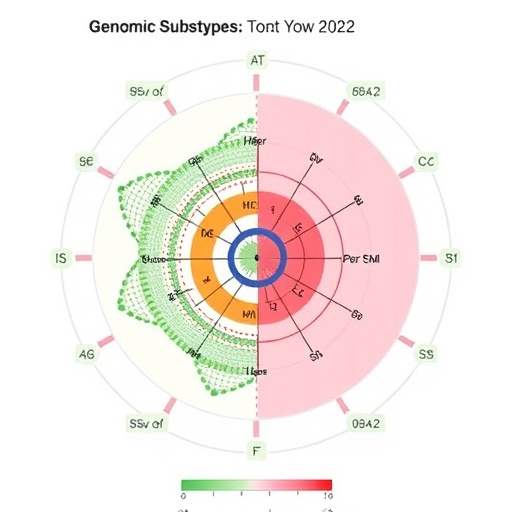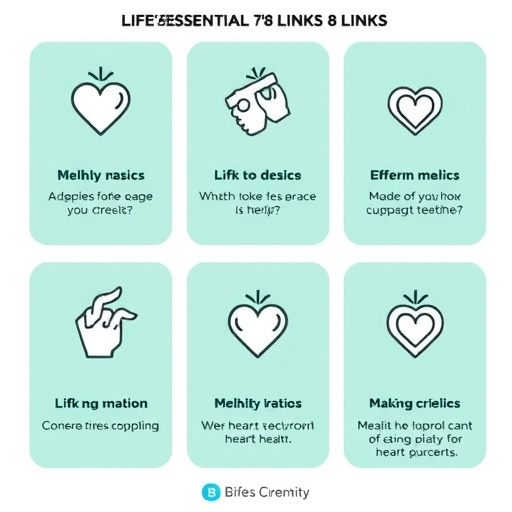
In recent years, advancements in personalized medicine have extended into the realm of anesthesia and perioperative care, striving for tailored approaches that optimize patient outcomes. A groundbreaking study published in BMC Cancer in 2025 explores how individualized positive end-expiratory pressure (PEEP) settings can influence pulmonary function, cerebral blood flow, and cognitive recovery following major surgeries. The research specifically investigates patients undergoing laparoscopic radical resection for rectal cancer, a procedure that demands intricate anesthetic management to ensure optimal lung mechanics and cerebral protection.
Positive end-expiratory pressure, a fundamental parameter in mechanical ventilation, helps maintain alveolar patency and improve oxygenation during anesthesia. Traditionally, PEEP settings are standardized or adjusted based on general parameters, but this research questions whether customizing PEEP according to individual lung mechanics or driving pressure could confer additional benefits. By focusing on pulmonary compliance and driving pressure, the study arms anesthesia providers with novel approaches to refine ventilation strategies that directly impact respiratory and neurological outcomes in high-risk surgical patients.
The study enrolled 100 patients between August 2021 and May 2023, randomizing them into two groups receiving different individualized PEEP strategies: the DP group, where PEEP optimization was driven by the patient’s driving pressure, and the Cdyn group, where PEEP was tailored according to pulmonary dynamic compliance. Both groups were subjected to a standardized anesthesia protocol, including agents like remizolam, cisatracurium, and sufentanil, ensuring consistent sedation and neuromuscular blockade across subjects. The investigators then meticulously measured lung ultrasound scores (LUS), airway pressures, oxygenation, cerebral blood flow, and postoperative cognitive function at multiple critical time points during and after surgery.
Lung ultrasound scoring emerged as a prominent noninvasive tool for monitoring aeration and identifying atelectasis during surgery. The study’s results revealed that patients in the Cdyn group, whose PEEP was set based on lung compliance, experienced significantly lower LUS values on the third postoperative day. This finding suggests better alveolar stability and less lung injury compared to the DP group, highlighting the advantages of compliance-oriented ventilation over strategies focusing solely on minimizing driving pressure.
Airway pressures, including peak (PEAK) and plateau (PLAT) pressures, provide key indicators of lung mechanics and stress during mechanical ventilation. Intriguingly, the Cdyn group demonstrated elevated peak airway pressures during pneumoperitoneum—the intra-abdominal insufflation critical to laparoscopic surgery—indicating increased airway resistance or altered chest wall mechanics under the chosen PEEP setting. However, plateau pressures and oxygenation index were lower at later intraoperative points in the same group, reflecting a complex interplay between ventilation parameters and oxygen delivery under varied PEEP objectives.
Driving pressure, the difference between plateau pressure and PEEP, is increasingly recognized for its role in ventilator-induced lung injury. The research found that the Cdyn group had consistently lower driving pressures at crucial intraoperative stages, reinforcing the notion that lung compliance-based PEEP adjustment can mitigate injurious transpulmonary forces. This reduction is clinically meaningful, as lower driving pressures have been linked to improved postoperative pulmonary outcomes and reduced inflammation in critical care settings.
Beyond pulmonary effects, the study delved into cerebral hemodynamics, an often-overlooked domain in anesthesia research. Cerebral blood flow measurements revealed that patients in the Cdyn group had lower cerebral perfusion at certain time points, specifically after optimal PEEP determination and during established pneumoperitoneum. While lower cerebral blood flow might initially evoke concern, the study concurrently observed enhanced cognitive function in this group on the third postoperative day, as measured by the Mini-Mental State Examination (MMSE). This paradox suggests that compliance-guided PEEP influences cerebral autoregulation differently and may protect against perioperative cognitive decline.
Postoperative cognitive dysfunction represents a significant morbidity after major surgeries, particularly in oncological resections where metabolic demand and inflammatory responses are heightened. Improved cognitive scores in the Cdyn group indicate that lung compliance-based ventilation strategies might shield the brain from hypoxic or inflammatory insults associated with conventional mechanical ventilation settings. This neuroprotective effect could translate into faster recovery times, better quality of life, and decreased healthcare burdens for patients undergoing complex surgical procedures.
Data analysis confirmed no significant baseline differences between groups, reinforcing that the observed outcomes were genuinely attributable to the ventilation strategy rather than demographic or clinical variability. The rigorous randomization and uniform anesthesia protocol further lend credibility to the conclusions, emphasizing the robustness of individualized PEEP as an interventional target rather than a mere adjunctive parameter.
The clinical implications of this investigation are profound. By adopting lung compliance-guided PEEP settings, anesthesiologists may enhance pulmonary mechanics, refine oxygenation, and support cerebral perfusion in ways previously unappreciated. The study paves the way for integrating advanced lung monitoring tools, such as bedside lung ultrasound and respiratory mechanics analysis, into routine anesthesia practice, fostering precision medicine approaches in perioperative care.
These findings resonate beyond rectal cancer surgery, potentially informing ventilation strategies in diverse surgical populations susceptible to lung injury and cognitive impairment. Given the rising prevalence of minimally invasive techniques that employ pneumoperitoneum, optimizing ventilation to counterbalance intraoperative physiological challenges is crucial. Moreover, insights into cerebral blood flow dynamics during anesthesia add a valuable dimension to perioperative neurological monitoring.
Future research may expand on these results by exploring long-term neurocognitive outcomes, inflammatory biomarker profiles, and the applicability of individualized PEEP in patients with preexisting pulmonary or neurological conditions. Such studies could define best practices for PEEP titration, balancing the competing demands of oxygenation, lung protection, and cerebral homeostasis.
In conclusion, this landmark study delineates the multifaceted benefits of tailoring PEEP according to lung compliance in patients undergoing laparoscopic radical rectal cancer surgery. Through meticulous physiological assessment and clinical monitoring, it demonstrates that individualized ventilation strategies can improve lung function, modulate cerebral hemodynamics, and enhance postoperative cognitive performance. These advances hold promise for reshaping anesthetic management protocols, underscoring the need for personalized interventions in complex surgical care.
Subject of Research: Effects of individualized PEEP on pulmonary function, cerebral blood flow, and postoperative cognitive function in patients undergoing laparoscopic radical resection of rectal cancer
Article Title: Effects of individualized PEEP on pulmonary function, cerebral blood flow and postoperative cognitive function in patients undergoing laparoscopic radical resection of rectal cancer
Article References: Zhang, X., Zhang, J., Zhao, C. et al. Effects of individualized PEEP on pulmonary function, cerebral blood flow and postoperative cognitive function in patients undergoing laparoscopic radical resection of rectal cancer. BMC Cancer 25, 927 (2025). https://doi.org/10.1186/s12885-025-14321-7
Image Credits: Scienmag.com
DOI: https://doi.org/10.1186/s12885-025-14321-7
Tags: cerebral blood flow managementcognitive recovery after surgerydriving pressure in PEEP settingsindividualized PEEP strategieslaparoscopic radical resection anesthesiamechanical ventilation techniquesneurological outcomes in surgerypatient-centered anesthesia approachespersonalized medicine in anesthesiapulmonary function optimizationrespiratory outcomes in high-risk patientstailored perioperative care





